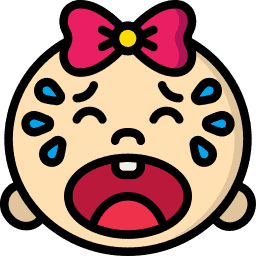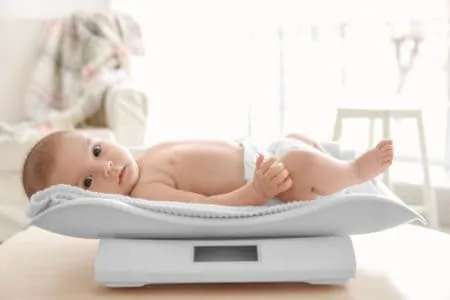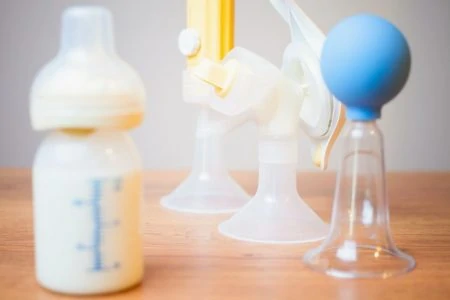Is a stubborn white rash coating your baby’s tongue? Are you dreading the next feed because of sharp, burning pain in your nipples?
You and your little one might be dealing with thrush.
While this yeast infection is uncomfortable and frustrating, it is common and treatable. It doesn’t mean you have to stop breastfeeding, but it does require consistent care to clear up completely.
In this article, we’ll cover how to spot the symptoms, treat the infection effectively, and stop it from coming back.
Key Takeaways
- Understand the cause: Thrush is a fungal infection caused by an overgrowth of Candida albicans, often triggered by antibiotics or warm, moist environments.
- Spot the signs: Look for white, cottage-cheese-like patches in your baby’s mouth and shiny, flaky, or painfully itchy nipples on your breasts.
- Treat both parties: To prevent the infection from passing back and forth, both mother and baby must be treated simultaneously, even if only one shows symptoms.
- Prevention is key: Keep breasts dry, change nursing pads frequently, wash hands often, and sterilize anything that goes in your baby’s mouth daily.
What Is Thrush?
Medically known as oral candidiasis, thrush is a fungal infection of the mouth. While it commonly appears in a baby’s mouth, it can easily spread to a mother’s nipples during breastfeeding.
Take Note
Candida is actually a normal part of our bodies. It lives on our skin and in our gut alongside healthy bacteria. However, when the balance of bacteria is disrupted, Candida can grow out of control and cause an infection (1).
Thrush affects approximately 1 in 20 babies. While it is generally easy to treat, it can be persistent.
If you or your baby get thrush consistently, especially after you’ve stopped breastfeeding, speak to your doctor to rule out underlying immune issues.
What Are the Symptoms of Thrush?
Thrush presents differently in mothers and babies. Because it is a “ping-pong” infection (meaning you pass it back and forth), you should look for signs in both of you.
Here are the symptoms to look for in your baby (2):
- White oral rash: Look for creamy, white patches on the tongue, gums, or inside the cheeks. Unlike milk residue, these patches do not wipe off easily.
- Feeding difficulties: Your baby may pull off the breast, make clicking sounds, or become fussy during breastfeeding due to mouth soreness.
- Diaper rash: The yeast can pass through the digestive system, causing a bright red, bumpy diaper rash that doesn’t heal with standard creams.
Mothers typically experience these symptoms:
- Nipple changes: Your nipples may become flaky, shiny, or blistered. They might look bright pink or red.
- Shooting pain: Unlike the pain of a poor latch, thrush pain often feels like deep shooting or burning needles inside the breast, persisting even after the feeding is over.
- Itching and sensitivity: Nipples may feel incredibly itchy or overly sensitive to the touch of clothing.
Doctors can usually diagnose thrush based on appearance alone, though they may swab the area if the case is stubborn.
If you have breast pain or a rash and aren’t sure if it’s thrush, visit your doctor immediately. Early treatment prevents the infection from deepening.
What Causes Thrush?
Several factors can disrupt your body’s natural bacterial balance, allowing yeast to thrive.
The most common culprit is the use of antibiotics (3):
- Antibiotic use: These medications kill harmful bacteria, but they also wipe out the “good” bacteria that keep Candida in check.
- Birth canal exposure: Babies can be exposed to yeast in the birth canal during delivery, which eventually develops into oral thrush.
- Cracked nipples: Open skin on the nipple provides an entry point for the fungus to enter the breast tissue.
- Moist environments: Yeast loves warmth and moisture. Wet nursing pads or synthetic bras create the perfect breeding ground.
Take Note
Antibiotics, Breast Milk, and Thrush
If you take antibiotics, small amounts can transfer to your breast milk. This can alter your breastfeeding baby’s gut flora.
Newborns and babies under six months are most at risk because their immune systems and microbiomes are still developing. While you should never stop necessary medication without medical advice, always ask your doctor about medication side effects regarding breastfeeding. Taking a probiotic during your antibiotic course may help maintain balance.
Can Thrush Be Transferred?
Yes, thrush is highly contagious between a nursing dyad (mom and baby).
If your baby has oral thrush, the saliva transfers the yeast to your nipples during a feed. Conversely, if you have a yeast infection on your nipples, your baby ingests it. This is why both of you must be treated simultaneously; otherwise, you will continue to reinfect one another.
Do I Need to Stop Breastfeeding?
You do not need to stop breastfeeding if you have thrush. In fact, continuing to breastfeed is usually best for your baby.
However, be careful with pumped milk. Freezing breast milk does not kill yeast; the cold only puts it in suspended animation. If you feed your baby milk pumped during an active thrush infection later on, you could reinfect them.
If you are pumping while infected, you can feed that milk to your baby immediately, but it is best not to freeze it for later use.
You can feed your baby fresh or frozen breast milk while you are both being actively treated, but you should not store milk you have pumped during a bout of thrush . Freezing will deactivate yeast but not kill it (5).
Editor's Note:
Michelle Roth, BA, IBCLCCan I Scrape Thrush Off?
When you see white spots in your baby’s mouth, you might instinctively try to wipe them away.
Here is how to tell the difference between milk and thrush:
- Milk residue: Wipes away easily with a damp cloth or disappears shortly after a feed.
- Thrush: Sticks to the tongue and cheeks. If you try to wipe it, it will stay put or reveal raw, red, bleeding skin underneath.
Do not try to scrape the spots off. This causes pain for your baby and creates open wounds that are susceptible to more serious bacterial infections.
How Can I Prevent Thrush While Breastfeeding?
Yeast is stubborn, so prevention focuses on eliminating the environments where it likes to hide.
Follow these steps to keep Candida under control:
1. Keep Your Breasts Dry and Cool
Yeast thrives in dark, warm, and sugary (milk) environments.
Keep your breast environment hostile to fungus:
- Use breathable fabrics: Wear cotton bras and avoid tight, synthetic clothing that traps sweat.
- Change pads frequently: Swap out your nursing pads as soon as they get damp.
- Avoid plastic liners: Disposable pads with plastic backings prevent airflow. Opt for reusable bamboo or cotton pads instead.
- Air dry: Whenever possible, allow your nipples to air dry completely after a feed before putting your bra back on.
2. Keep Things Clean
Any object that goes into your baby’s mouth or touches your breasts can harbor yeast cells.
You must sterilize (boil or steam) these items daily during an infection:
- Baby toys and teething rings.
- Breast pump parts (flanges and valves).
- Pacifiers and bottle nipples.
Quick Tip
3. Wash Your Hands
Hand hygiene stops the spread of microscopic yeast cells.
Wash your hands thoroughly with soap and warm water before and after nursing, and especially after diaper changes. If you are out and about, use an alcohol-based hand sanitizer.
4. Indulge in Some Yogurt
Probiotics help restore the “good” bacteria that fight off yeast.
Look for plain yogurt containing active cultures like Lactobacillus. Avoid high-sugar yogurts, as sugar feeds yeast. Eating a daily serving can help regulate your internal microbiome.
Non-Dairy Tip
How Can I Treat Thrush?
If you suspect thrush, call your doctor. Home remedies help, but medical treatment is often necessary to knock out the infection fully.
Common medical treatments include:
- Nystatin: An antifungal liquid prescribed for the baby’s mouth and a cream for the mother’s nipples.
- Fluconazole (Diflucan): A stronger oral antifungal pill for the mother, often used if Nystatin doesn’t work.
- Gentian Violet: An older, effective antiseptic dye. Use this only under a doctor’s supervision (6).
Candida can incubate for several days without symptoms (7). Therefore, you must continue the full course of medication (usually two weeks) even if symptoms disappear after a few days. Stopping early often leads to a quick recurrence.
Take Note
At-Home Relief of Thrush
While waiting for medication to kick in, you can try these home remedies to soothe the pain and create an environment where yeast cannot survive.
- Reduce sugar intake: Yeast feeds on sugar. Limiting refined carbs and sweets in your diet can starve the infection.
- Use coconut oil: Coconut oil contains caprylic acid, which has antifungal properties. Apply a thin layer to your nipples to soothe cracking.
- Vinegar rinse: Mix one tablespoon of apple cider vinegar with one cup of water. Rinse your nipples with this solution after every feeding to alter the pH of your skin (yeast hates acid). Rinse with clear water before the baby feeds again.
- Go topless: Exposing your breasts to sunlight and fresh air helps kill yeast. It also prevents the warm, damp environment that bras create.
Products for Treating Thrush
Dealing with thrush requires a specific toolkit. The right products can speed up healing and prevent the infection from spreading.
Here are the types of products you should consider adding to your daily routine:
- Disposable Nursing Pads: During an active infection, use disposables and change them at every feeding. This ensures you aren’t reusing fabric that might harbor yeast. Look for pads without plastic backings to ensure airflow.
- Gel Hydrogel Pads: These cool, soothing pads can provide immense relief if your breasts are in pain. Some can be chilled in the fridge for extra comfort.
- Antifungal Nipple Cream: While prescription creams are best, some over-the-counter nipple creams contain natural antifungals. Always check with your doctor before applying medicated creams.
- Baby Probiotics: Drops containing L. reuteri can be given directly to your baby to help balance their gut flora. This is especially helpful if your baby was born via C-section or if you have taken antibiotics recently.










